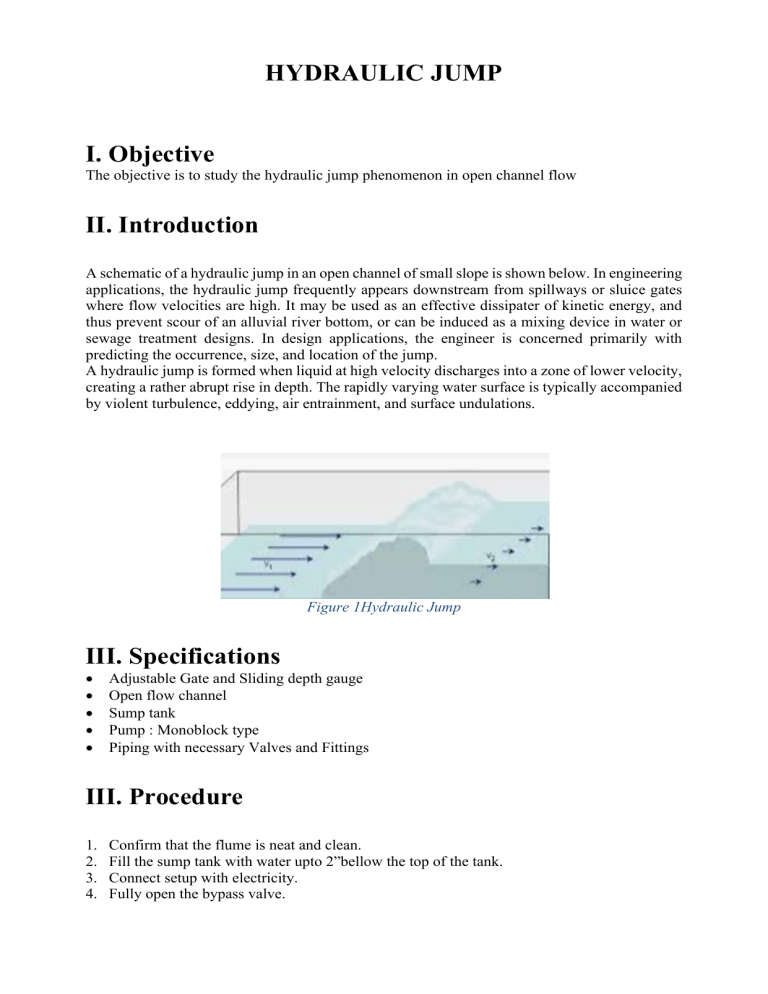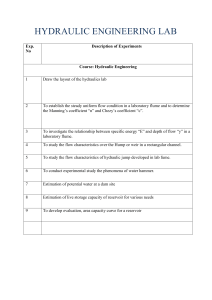
HYDRAULIC JUMP I. Objective The objective is to study the hydraulic jump phenomenon in open channel flow II. Introduction A schematic of a hydraulic jump in an open channel of small slope is shown below. In engineering applications, the hydraulic jump frequently appears downstream from spillways or sluice gates where flow velocities are high. It may be used as an effective dissipater of kinetic energy, and thus prevent scour of an alluvial river bottom, or can be induced as a mixing device in water or sewage treatment designs. In design applications, the engineer is concerned primarily with predicting the occurrence, size, and location of the jump. A hydraulic jump is formed when liquid at high velocity discharges into a zone of lower velocity, creating a rather abrupt rise in depth. The rapidly varying water surface is typically accompanied by violent turbulence, eddying, air entrainment, and surface undulations. Figure 1Hydraulic Jump III. Specifications • • • • • Adjustable Gate and Sliding depth gauge Open flow channel Sump tank Pump : Monoblock type Piping with necessary Valves and Fittings III. Procedure 1. 2. 3. 4. Confirm that the flume is neat and clean. Fill the sump tank with water upto 2”bellow the top of the tank. Connect setup with electricity. Fully open the bypass valve. 5. 6. 7. 8. Switch ON the pump. Now start the flow in the flume by partially closing the bypass valve Wait till flow reaches a steady state. Position the upstream gate or headgate, so that the upstream water level is near the top of the flume. 9. Position the tailgate such that to create a hydraulic jump in the flume. 10. Repeat steps 8-9 for different headgate position

